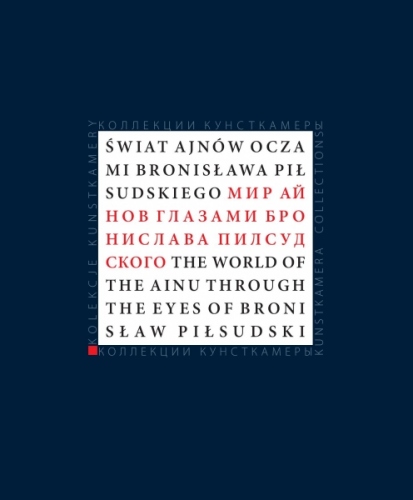The world of the Ainu people through the eyes of Bronisław Piłsudski
The album Świat Ajnów oczami Bronisława Piłsudskiego [The world of the Ainu people through the eyes of Bronisław Piłsudski] is an extraordinary publication. It presents photographs and never exhibited or published artefacts collected by Bronisław Piłsudski during his Siberian exile and on his research expeditions.
The album Świat Ajnów oczami Bronisława Piłsudskiego is an extraordinary publication. It presents photographs and never before exhibited or published artefacts collected by Bronisław Piłsudski during his Siberian exile and on his research expeditions.
The Ainu people, the Palaeo-Asiatic inhabitants of parts of Sakhalin, the Japanese and the Kurile Islands, became for Józef Piłsudski's elder brother an object of interest, passion and... love. In order not only to get to know the Ainu people but also to understand them, he made use of the latest technological achievements of the time. Thanks to Edison's phonograph cylinder, he recorded their music, songs and legends on wax cylinders. He collected rich photographic documentation, meticulously describing each picture he took, and he also did the same with the collected objects of material culture.
"When he was among the Ainu people, Bronisław Piłsudski did not perceive them merely as objects of research. As an exile from Poland – a country erased from the map of the world – he felt a common fate with the natives of Sakhalin, who were the only ones to love this country, the place where they had lived since the beginning of time, now hated and tarnished by those who made it a penal colony." – Ernest Wyciszkiewicz, the Director of the Centre for Polish-Russian Dialogue and Understanding
However, Bronisław Piłsudski did not limit himself to scientific research of the Ainu people – he tried to help and support them, by providing medical treatment or organising schools. His stay among them was also special since that was where he married Ajnka Czuchsamma. Two children were born from this marriage – a son Sukezo and a daughter Kiyo.
Thanks to the cooperation of the Polish-Russian Centre for Dialogue and Understanding with the Peter the Great Museum of Anthropology and Ethnography "Kunstkamera" of the Russian Academy of Sciences in St. Petersburg, which houses the Bronisław Piłsudski’s collection, it was possible to recreate on the pages of this album the no longer existing world of the Ainu people at the turn of the 19th and 20th centuries.
The photographs show, among other things, how the Ainu people dressed, how they lived; we can learn how they hunted and fished. We can see the original products of their crafts. We can learn about their traditional belief system. And Andrey Sokolov and Veronika Belyaeva-Sachuk, the authors of the publication, will introduce us to the world of the Ainu people through the eyes of Bronisław Piłsudski.
"The exhibits should not be closed in museum storerooms; our mission is to present them at exhibitions and in publications, in the name of expanding the knowledge of ethnic cultures as a priceless value and part of world heritage." – Andrei Golovniov, director of the Peter the Great Museum of Anthropology and Ethnography "Kunstkamera" RAS.
